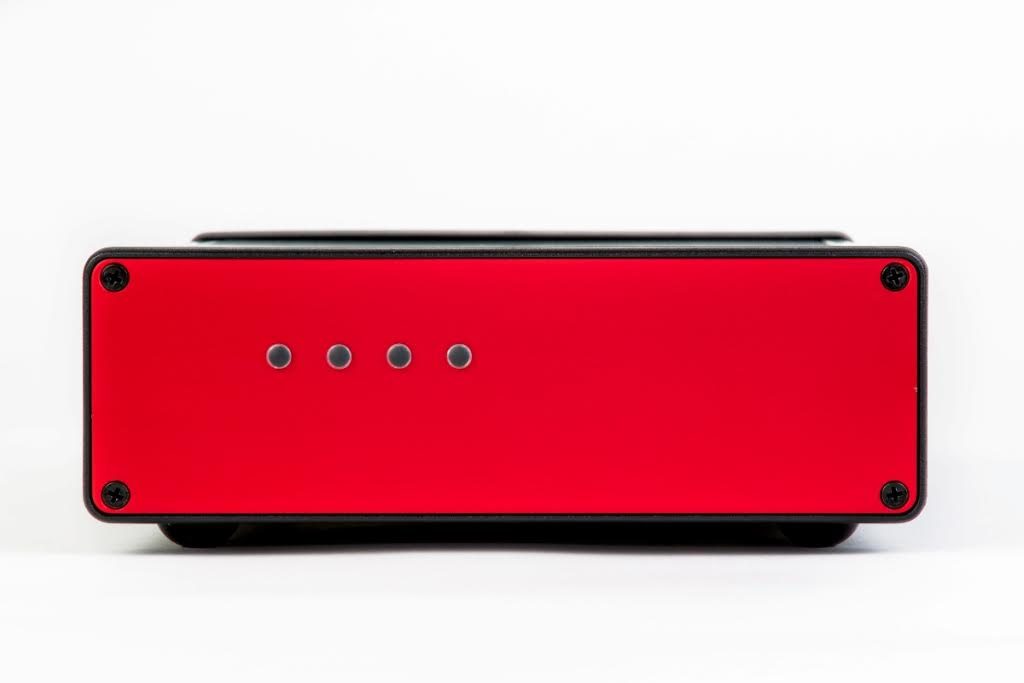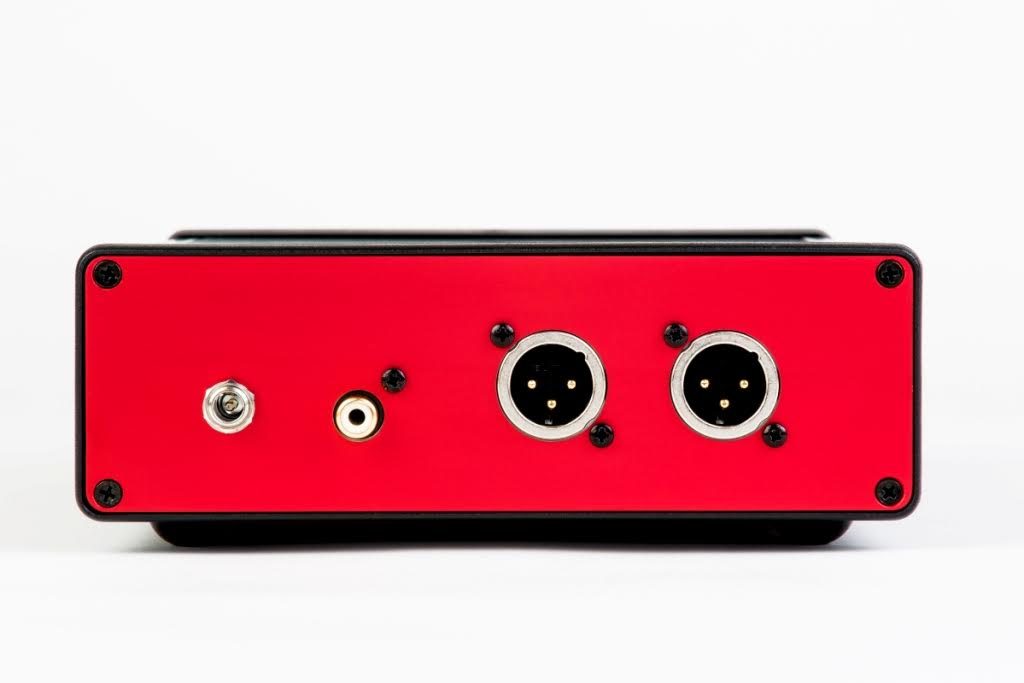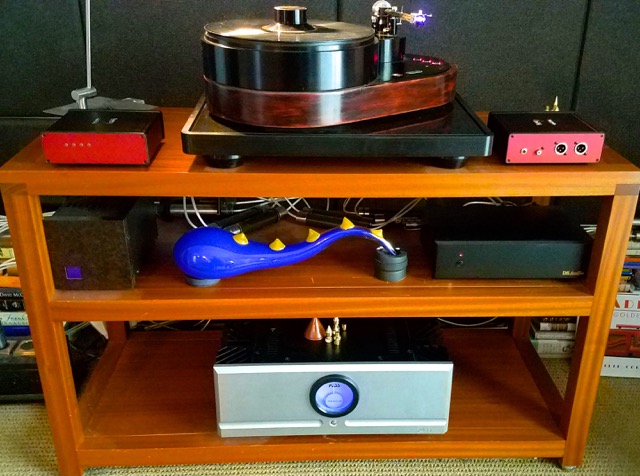One thing for sure is that there is no lack of DACs at any cost these days. The surprising thing to me is that they all sound pretty darn good, yet very few can stand up to an analog source in listenability and emotional involvement. In 1983, Sony released its first Compact Disc Player, the CDP-10, and in my opinion, it sounded shockingly bad. So, it is with some amazement that I find that most digital sources sound pretty good today.
In the time since 1983, I have listened to CDs, DVD-Audio Disc, SACDs, Blu-Rays, and streaming systems in my home. The first digital system I thought showed potential to sound like music was the CAL Audio Tempest. I purchased one of these in 1987 and listened to music with it that I could get on LPs. That was the role of a digital source in my system until early 2001 when I got a Sony SACD-777ES. At the time it was far and away the very best digital I had ever heard and good enough to be a primary listening source.
In the last 16 years there has been a lot of hoopla over oversampling, then hi-rez and on and on, but to me, it has been interesting to notice how the gap has closed between reasonably priced digital sources and mega-expensive ones. Last summer I reviewed the Oppo 105D USB DAC, Streaming, SACD and Blu-Ray Player. In that review I said, “I was over at Constantine’s place, and he was playing his Esoteric K-03 SACD/CD player and 32-bit USB DAC, using the Esoteric G-01 rubidium clock. Then, just for the heck of it, he said, let’s listen to a couple of SACDs on the Oppo. To say I was shocked is an understatement. It was literally a jaw-dropping experience.” Three months ago, I reviewed the Oppo Digital Sonica DAC, and to my surprise, it sounded even better than the 105D. I have shared all this so that you can understand my take on digital sources before reading my opinion of the Digital Amplifier Company’s DAC that they call the DAC DAC.
Description and Design
I learned from their website that Digital Amplifier Company was founded in 1996 after several years of developing switching amplifiers for audio. You can read about the journey on their website, but after much research, they eventually decided to manufacture their own finished products. Tommy O’Brien, the owner, says “We designed our amps for high performance on the bench, but more importantly, ultimate sonic satisfaction!” A big part of Tommy’s approach to electronic design is to use the shortest possible signal path for each product.
When unpacking the DAC, I noticed there were two DACs in the box instead of just the single DAC that I was expecting, and I was a little surprised by how small and lightweight the DAC DAC is. It’s not tiny, but it is small. It comes in an aluminum enclosure with vibration-absorbing Sorbothane feet that are 6.5″ x 6.3″ x 2.5.” Tommy at Digital Amplifier Company had sent me both the HS and TL versions of the DAC DAC. They have nice looking red front panels with four indicator lights for power, signal lock, and incoming sampling frequencies. The rear panel has a Coax SPDIF input, a PCM input up to 192kHz sample rate, 24-bit resolution, 2 XLR balanced outputs, and an input for the external 12VDC power supply. Both versions of the Digital Amplifier Co. DAC DAC support upstream MQA decoding (by the source).

DAC DAC Front Panel

DAC DAC Rear Panel
Review System
I used the two versions of the DAC DAC in my digital system consisting of a Linear Tube Audio MZ2-S integrated amp with a pair of Teresonic Magus speakers with the Lowther DX65 drivers, a TBI Audio Systems Magellan VIP active subwoofer, and an OPPO 105D for the source to go into the two DACs. All of the cables were Audience AU24SX. I also used a 47 Labs 4735 Midnight Blue CD Player as a transport during the review.

Listening
So, how does Tommy’s unique approach to electronic design using the shortest signal path for better sound, work out in real life? Well, both of the DAC DACs are very listenable. I’m not going to waste your time, I’ll tell you right off the bat that they are as listenable as any digital source I have had in my system. I like both the HS and the TL. The TL stands for tube-like, but I can tell you one thing, neither of these DACs is analog-like. I want to say this because I hate it when people talk about how analog-like any digital player sounds. First of all, if the goal was to sound like analog, why would we even fool with digital sources. Second, and much more important, the goal of any source component and for that matter, any audio system is to reproduce a musical performance in a way that is true to the performance and engages us as listeners in the emotions of the music.
I played a lot of different albums for this review that I use for evaluating a system, but most of these were just music my son or I just wanted to listen to. We played jazz, classical, bluegrass, roots, and rock. We both found it easy to sit and listen for long periods of time and just enjoy the music.
Both the HS and the TL made it easy to just sit and listen, and I’d say better than most digital sources I have had in my house. Some of these sources cost up to $40,000, but I did not have them on hand to make a direct comparison. However, I don’t remember them being vastly better, if any better at all.
In my recent review in Dagogo of the OPPO Sonica, I said, “I was also very impressed with the Sonica’s ability to let me become emotionally involved in the music. This is an area that makes or breaks it when I consider whether or not I’ll buy a certain piece of equipment. I just have no interest in listening to music that doesn’t move me.” The same is true with both the HS and the TL. In fact, both of the DAC DACs raise the bar much higher in this regard. One of the reasons for this is that they don’t have a dip in the lower mid-range area that is used so often to make components sound clearer and quicker.
Still, voices, strings, and horns all sounded so clear that I can hear all the air and nuances that make them sound so real. What was better than many far more expensive digital sources was that I could still hear the body of the sound. In this they reminded me of the Audio Note DAC 5I reviewed years ago. The HS seemed to contribute less of its own sound than I remember from the Audio Note. Compared to the TL, the HS has a slightly better sense of resolution as the music appears out of absolute silence.
Overall voices, strings, and horns all sound very natural with either of the DAC DACs, with all the air and nuances that allow music to sound so real. I highly value the ability of equipment to let me hear the air and nuances of music; it helps a system to sound more alive. Here I found the HS to be slightly better.
The HS had very tight, deep and full bass, while the TL’s bass was a little warmer. The leading edge of bass instruments was a little quicker on the HS, while both have very nice decay after the leading edge. Used in this review system with the subwoofer, it was immediately clear how the HS was precisely portraying both a flatter frequency response from the very bottom end out to the treble. The dynamics, scale, and size were stunning; better than any digital source I can remember hearing in my system. As impressive as the dynamics were, I was even more impressed with the micro-dynamics and the transients of the HS.
Both the TL and HS passed my treble test. That is, I never asked where is the top end or why is the top-end so etched? The HS does have just a touch more sparkle, but by contrast, I like the little extra fullness on guitar strings better on the TL. The warmth and individual qualities of violins were especially beautiful on the TL, but in the end, on my system overall, I preferred the HS on both classical music and jazz.
Both the HS and TL have an unusually coherent and focused soundstage that added to the musical event instead of taking away from it. The presentation of the soundstage was slightly more forward with the HS. Which one is right or would work best for you will be a matter of personal preference and the system you place it in. Still, overall both of these DACs have a superb soundstage.
Conclusion
By now it should be obvious that I think both the HS and TL versions of the DAC DAC are simply remarkable. These hot-rodded DACs don’t give you any frills, but they give you really great sound for a reasonable price. I know there are a lot of little DACs for under $300, but I haven’t heard one that can touch either of these two. There are also a lot of DACs from $5,000 on up to $50,000 plus. Yes, some but not all of these may sound a little better, but you need to be a whole lot more committed to digital than I am to consider these.
In conclusion, these are the first DACs I have found to really be much better than the OPPO 105D in my home system since the Audio Note DAC 5 Special. I do like all the features of the OPPO 105D, so here’s my suggestion. Use the OPPO 105D for your transport and one of these DAC DACs for your DAC. Heck, since OPPO just released the 4K player called the OPPO 205, I bet you can pick up a used one and have an incredible digital source for $2,000 or less.
The last question has to be which DAC DAC to get. Before listening, I just assumed I would like the TL better. I do like the TL, but in the end, I prefer the HS. Neither one sounds etched or overly detailed in the way that some of the most expensive DACs do. If your system is a little on the bright side or if you have mini-monitors that are a little bright or etched sounding and you love a soundstage that floats well behind the speakers, then I would recommend the TL. If you have a system that is tonally neutral or slightly warm (the HS is going to fix an overly warm system), then I think like me you will appreciate the bass and transparency of this little DAC. I highly recommend either of the DAC DACs! Thanks, Tommy for such a great product for such a reasonable price.
Specifications
Two versions – TL/HS, the difference is the output stage circuit
Coax SPDIF input, PCM up to 192kHz sample rate, 24-bit resolution
Balanced outputs (XLR)
External 12VDC power supply
Indicators for Power, Valid Signal, >50kHz Fs, >100kHz Fs
6.5″ x 6.3″ x 2.5″ aluminum enclosure with vibration-absorbing Sorbothane feet
Custom XLR-to-RCA adapters are available for single-ended output. These are special adapters and wired differently than off-the-shelf versions. The use of off-the-shelf versions can short one side of the output leading to high distortion and possible destruction of the DAC.
Digital Amp Co’s KING Stereo Maraschino amplifiers come with a 60V 1kW power supply that can be modified to provide the 12VDC needed for the DAC DAC. This eliminates the need for the separate included 12VDC adapter.
Specifications TL Version (Tube-Like)
Shortest Signal Path
120db SNR
Specifications HS Version (High-Spec)
0.0004% THD+N
Precise, Super-Clean Presentation
124db SNR
